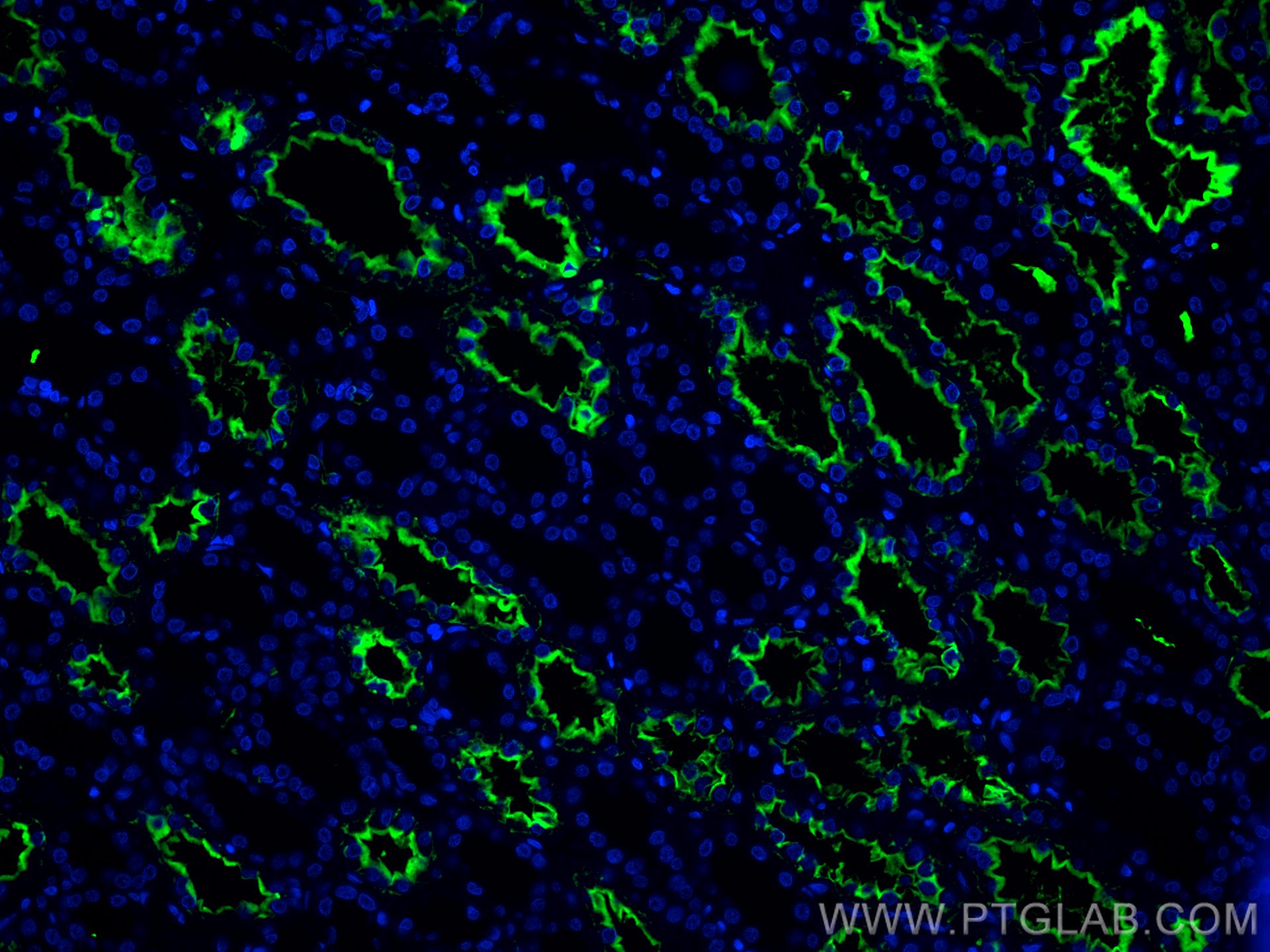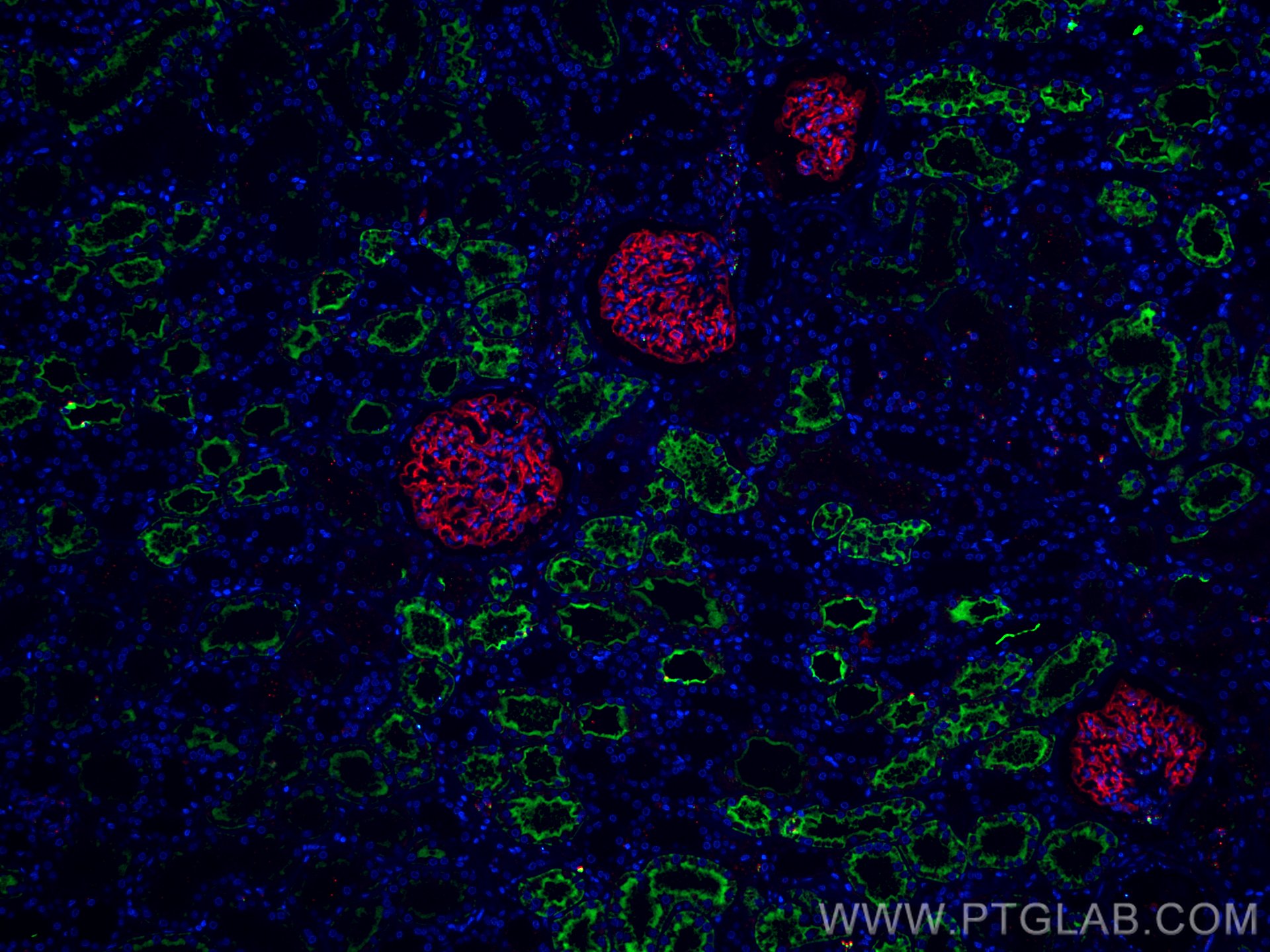AQP1 Monoklonaler Antikörper
AQP1 Monoklonal Antikörper für IF-P
Wirt / Isotyp
Maus / IgG1
Getestete Reaktivität
Hausschwein, human
Anwendung
IF-P
Konjugation
CoraLite® Plus 488 Fluorescent Dye
CloneNo.
2E5D6
Kat-Nr. : CL488-66805
Synonyme
Geprüfte Anwendungen
| Erfolgreiche Detektion in IF-P | humanes Nierengewebe |
Empfohlene Verdünnung
| Anwendung | Verdünnung |
|---|---|
| Immunfluoreszenz (IF)-P | IF-P : 1:50-1:500 |
| It is recommended that this reagent should be titrated in each testing system to obtain optimal results. | |
| Sample-dependent, check data in validation data gallery | |
Produktinformation
CL488-66805 bindet in IF-P AQP1 und zeigt Reaktivität mit Hausschwein, human
| Getestete Reaktivität | Hausschwein, human |
| Wirt / Isotyp | Maus / IgG1 |
| Klonalität | Monoklonal |
| Typ | Antikörper |
| Immunogen | AQP1 fusion protein Ag14093 |
| Vollständiger Name | aquaporin 1 (Colton blood group) |
| Berechnetes Molekulargewicht | 269 aa, 29 kDa |
| Beobachtetes Molekulargewicht | 28 kDa, 38-40 kDa |
| GenBank-Zugangsnummer | BC022486 |
| Gene symbol | AQP1 |
| Gene ID (NCBI) | 358 |
| Konjugation | CoraLite® Plus 488 Fluorescent Dye |
| Excitation/Emission maxima wavelengths | 493 nm / 522 nm |
| Form | Liquid |
| Reinigungsmethode | Protein-G-Reinigung |
| Lagerungspuffer | PBS with 50% glycerol, 0.05% Proclin300, 0.5% BSA |
| Lagerungsbedingungen | Bei -20°C lagern. Vor Licht schützen. Nach dem Versand ein Jahr stabil. Aliquotieren ist bei -20oC Lagerung nicht notwendig. 20ul Größen enthalten 0,1% BSA. |
Hintergrundinformationen
AQP1 is a member of aquaporins (AQPs) that are small membrane-spanning proteins facilitating water transport. AQP1 is expressed in most tissues in the mammalian body. Alterations of AQP1 expression have been linked to variety of diseases, including cancer. The predicted molecular weight of AQP1 is around 28 kDa, while highly glycosylated form can also be observed around 40-45 kDa. (1530176)
Protokolle
| PRODUKTSPEZIFISCHE PROTOKOLLE | |
|---|---|
| IF protocol for CL Plus 488 AQP1 antibody CL488-66805 | Protokoll herunterladen |
| STANDARD-PROTOKOLLE | |
|---|---|
| Klicken Sie hier, um unsere Standardprotokolle anzuzeigen |



